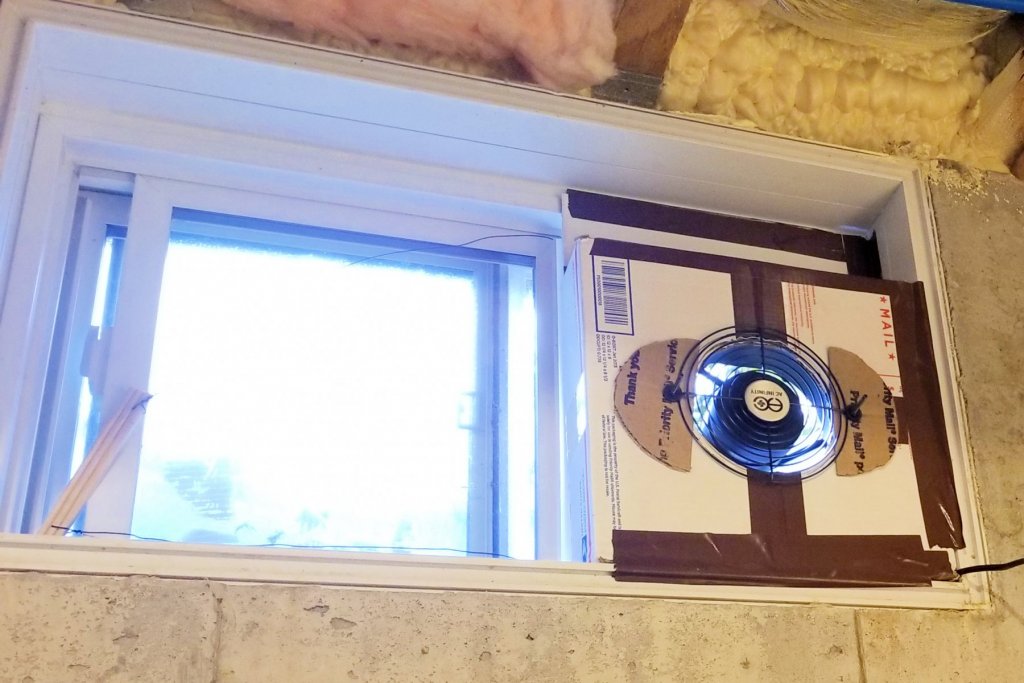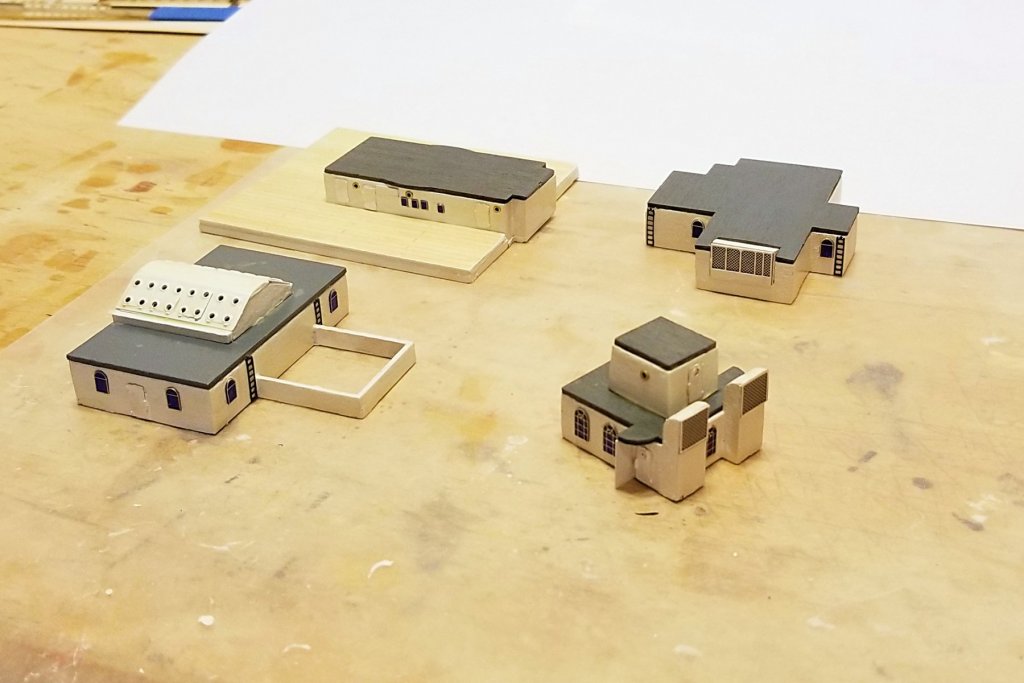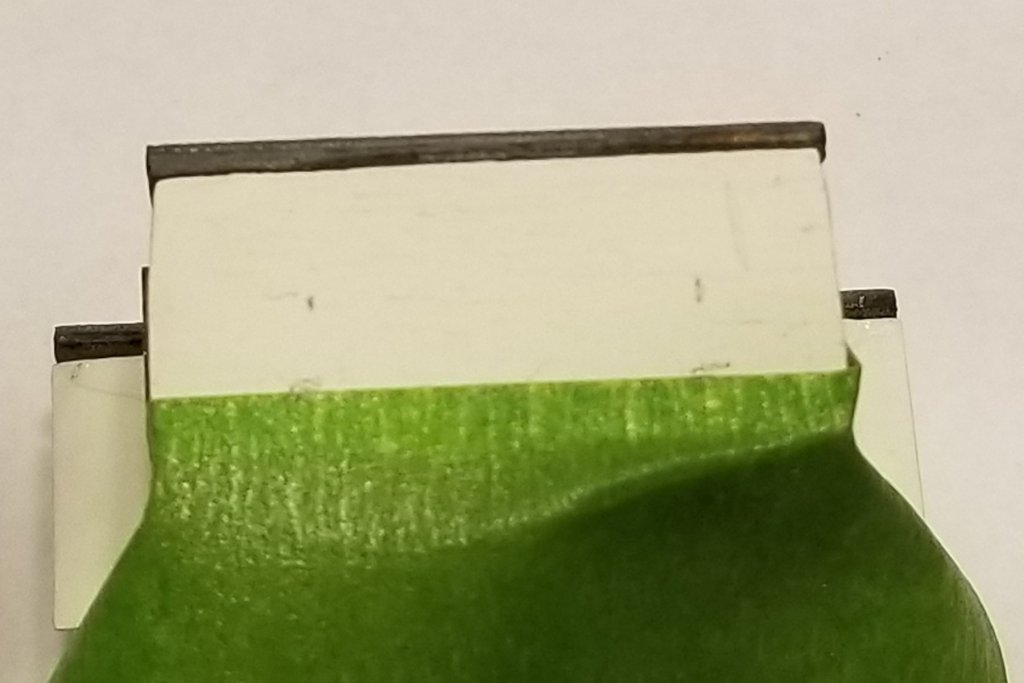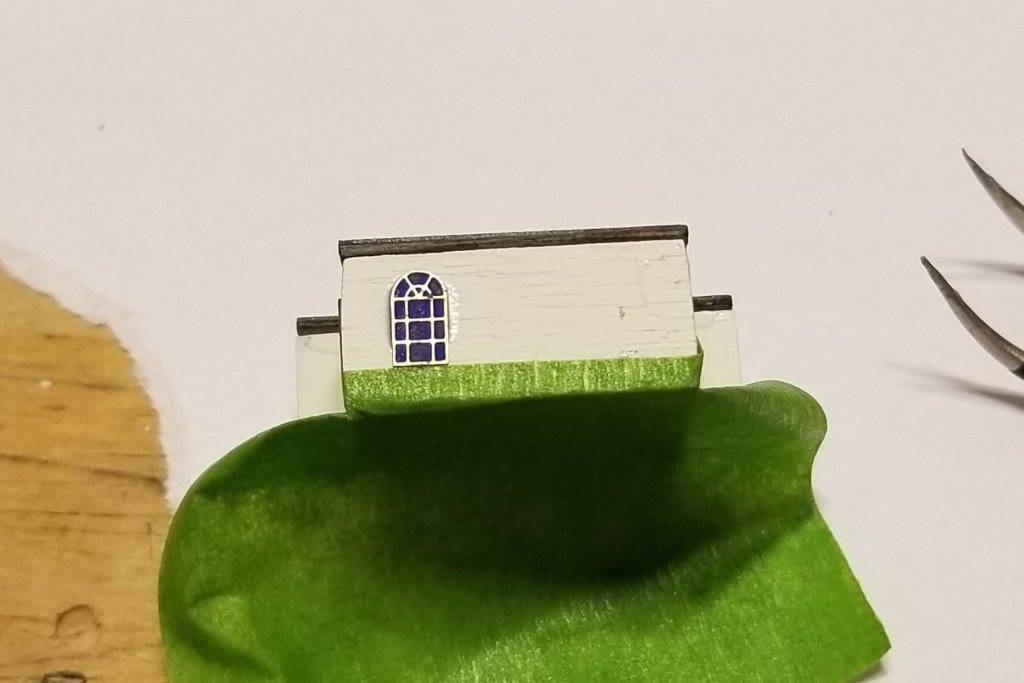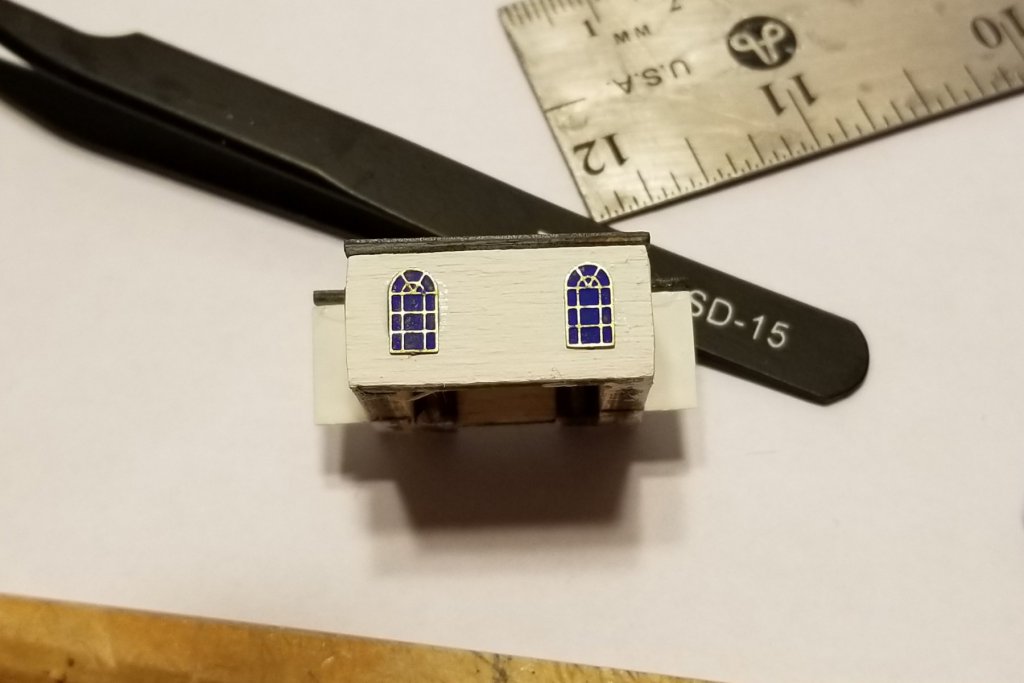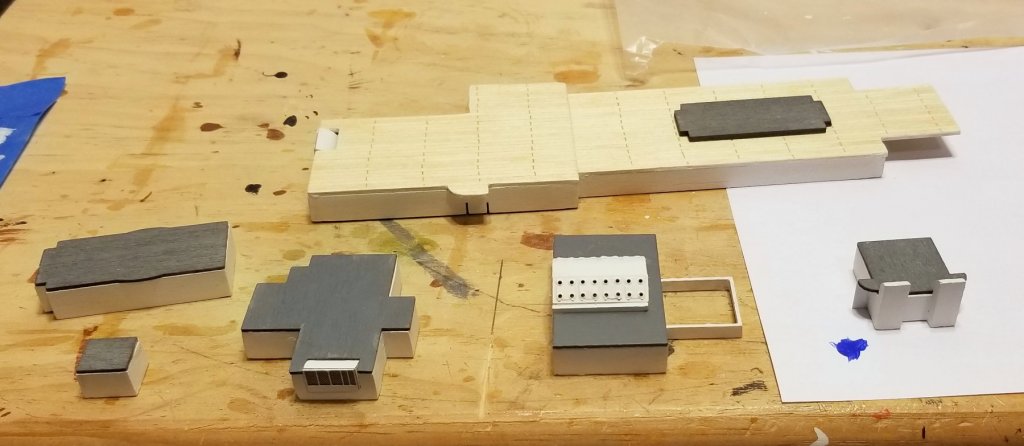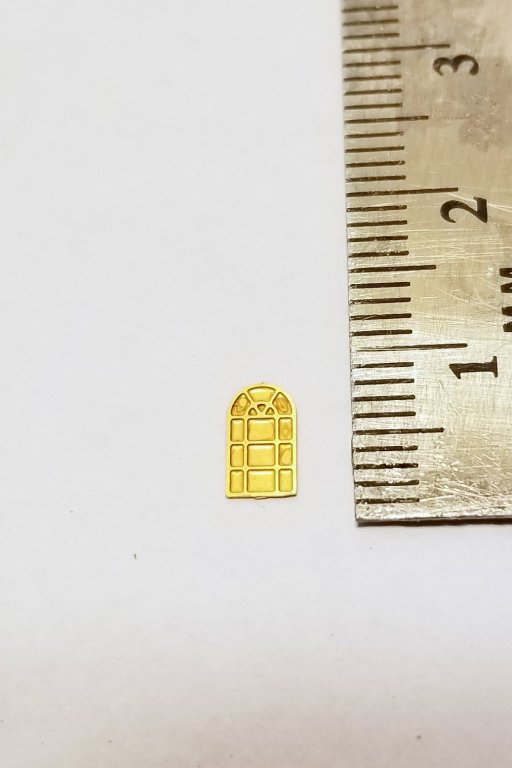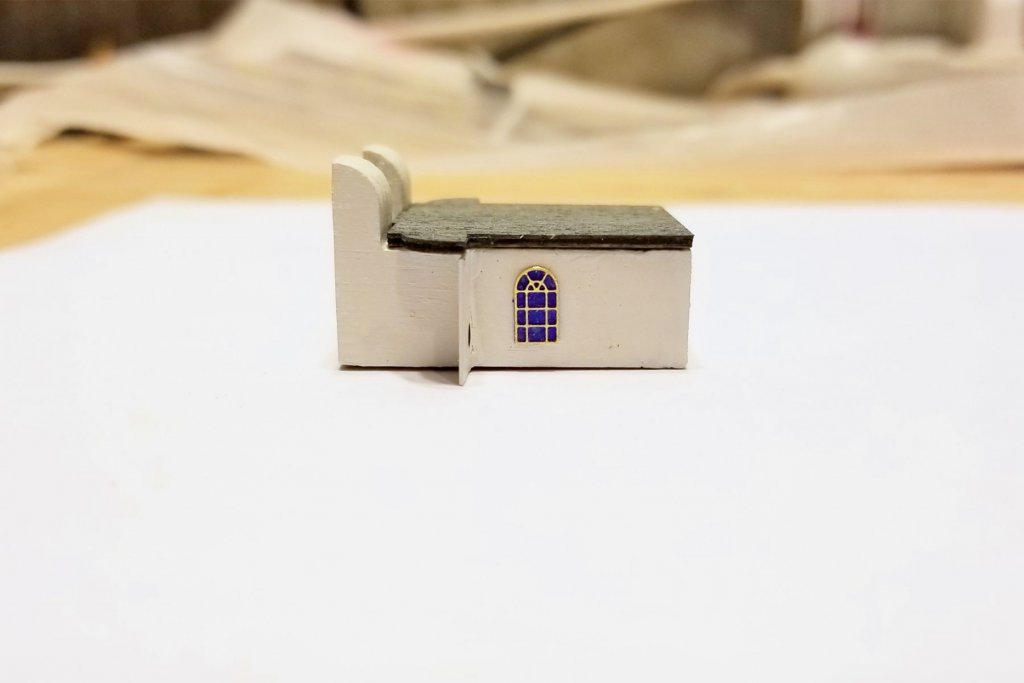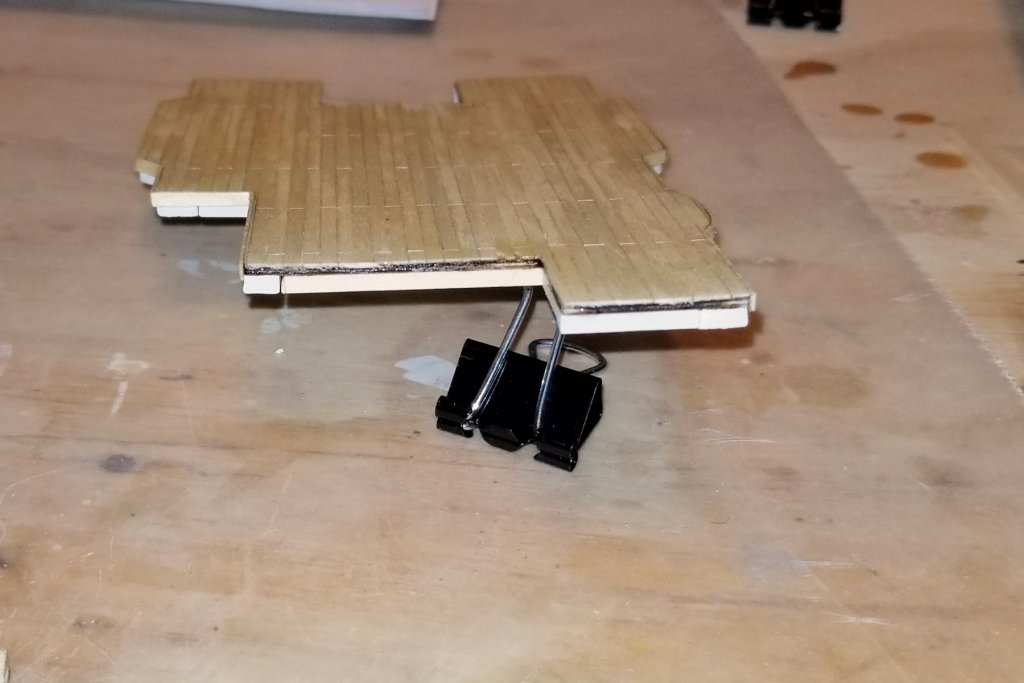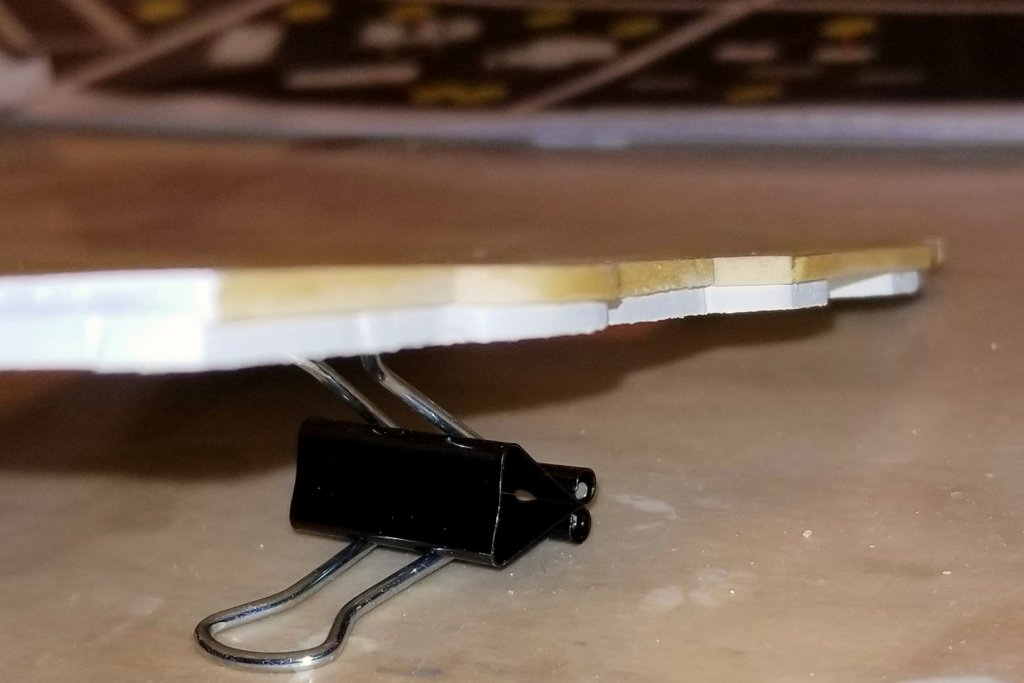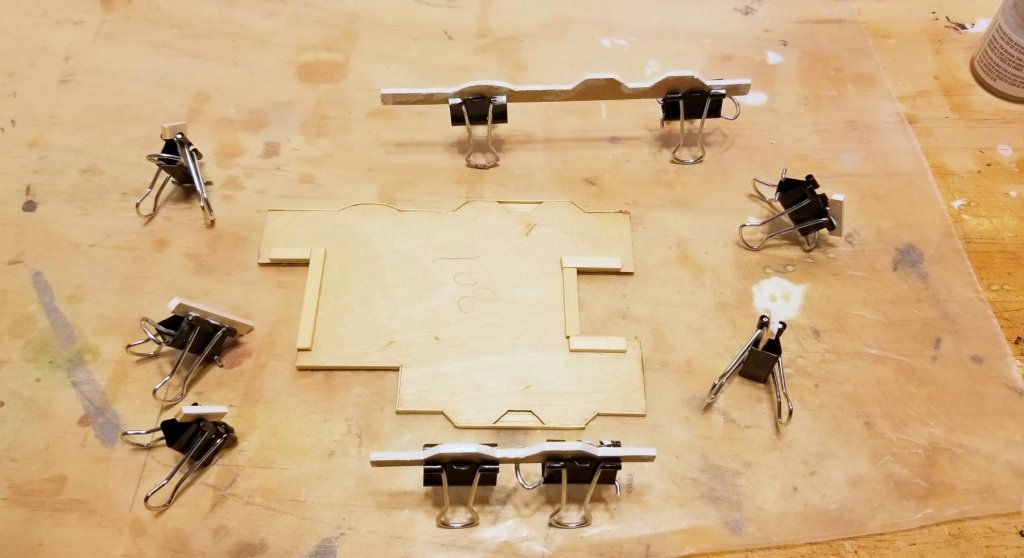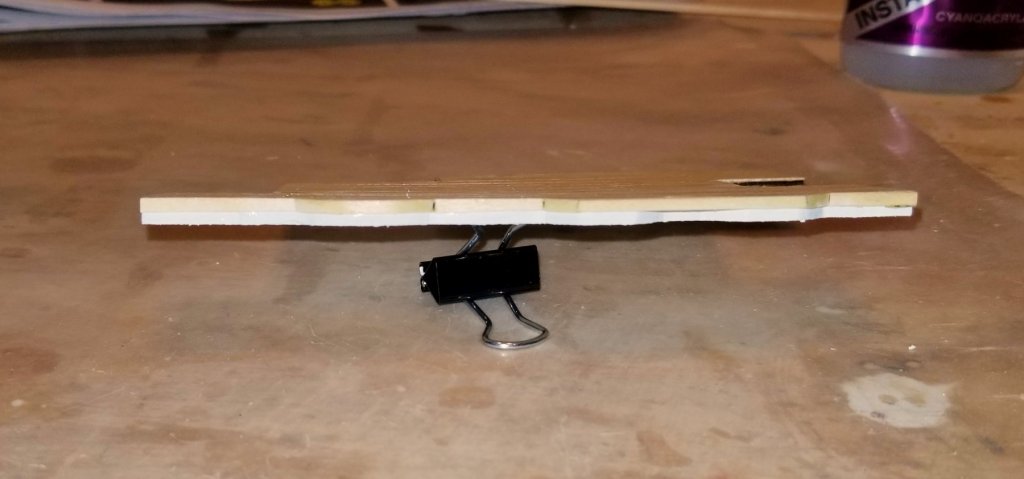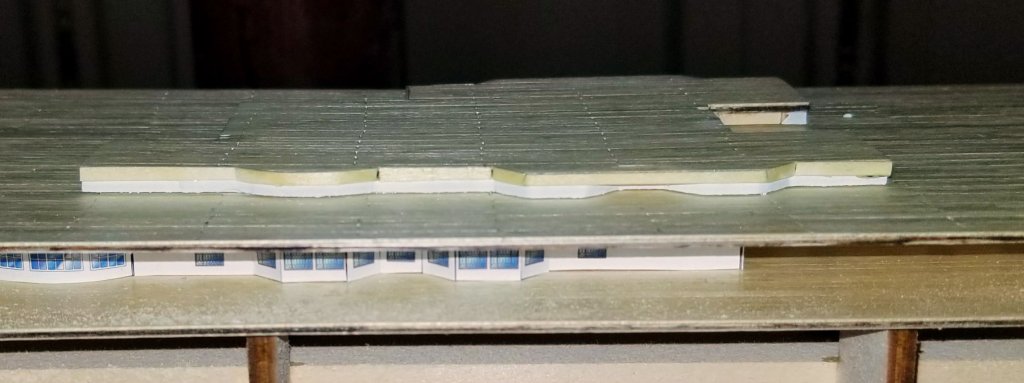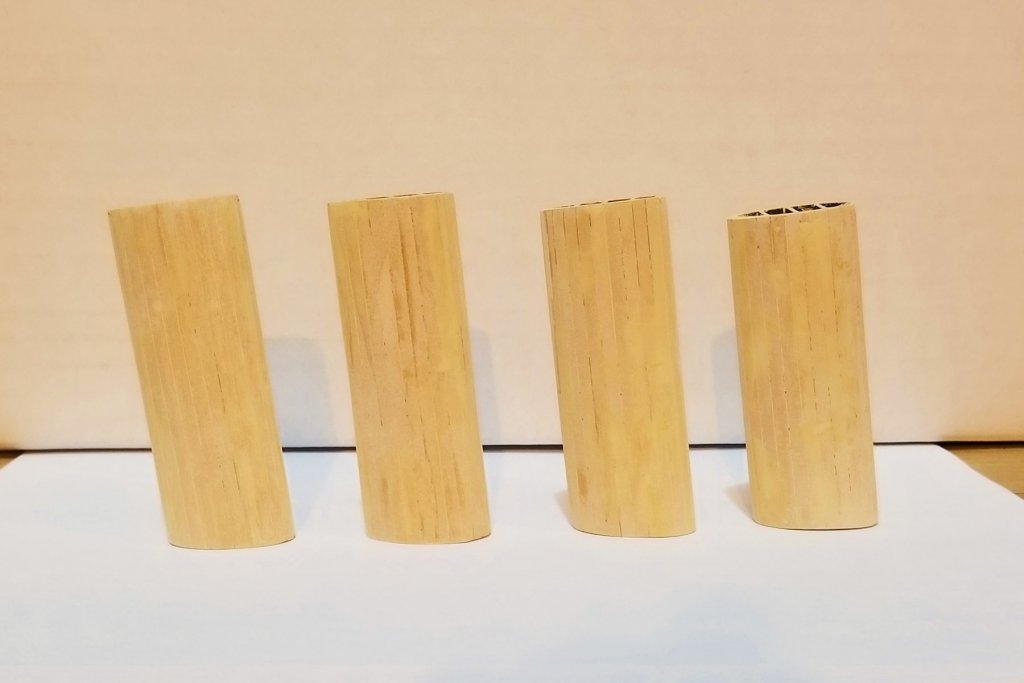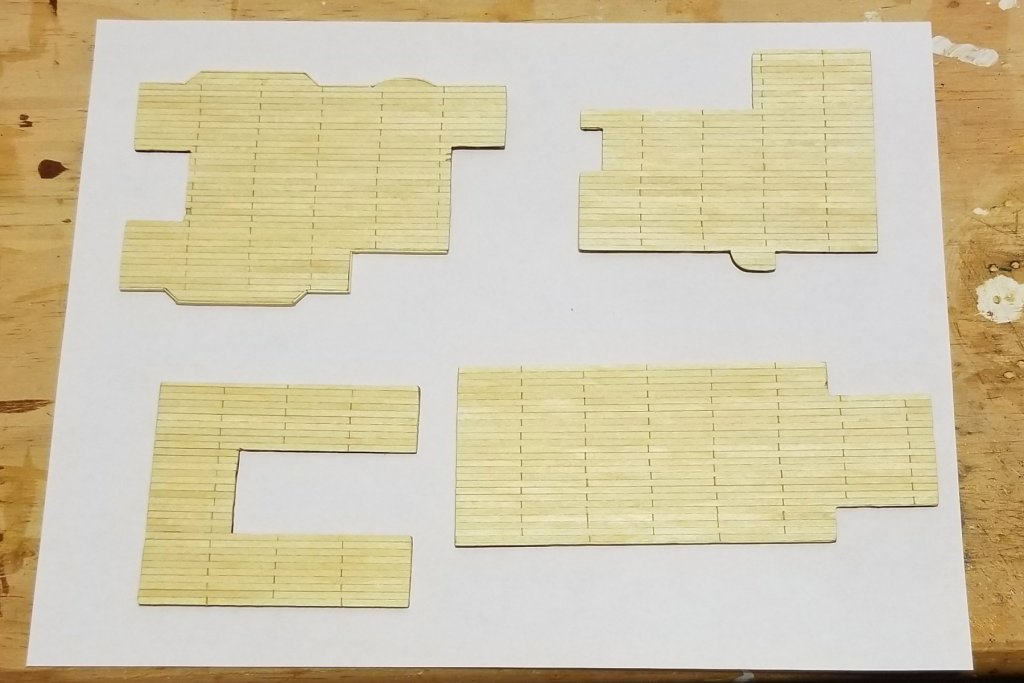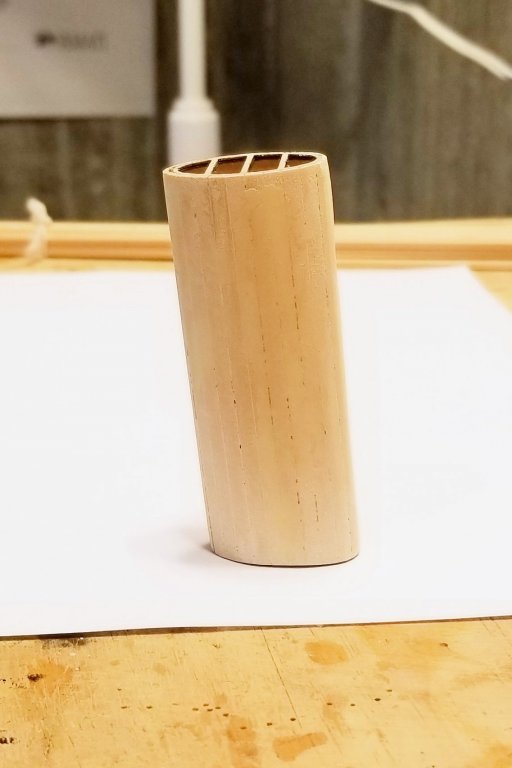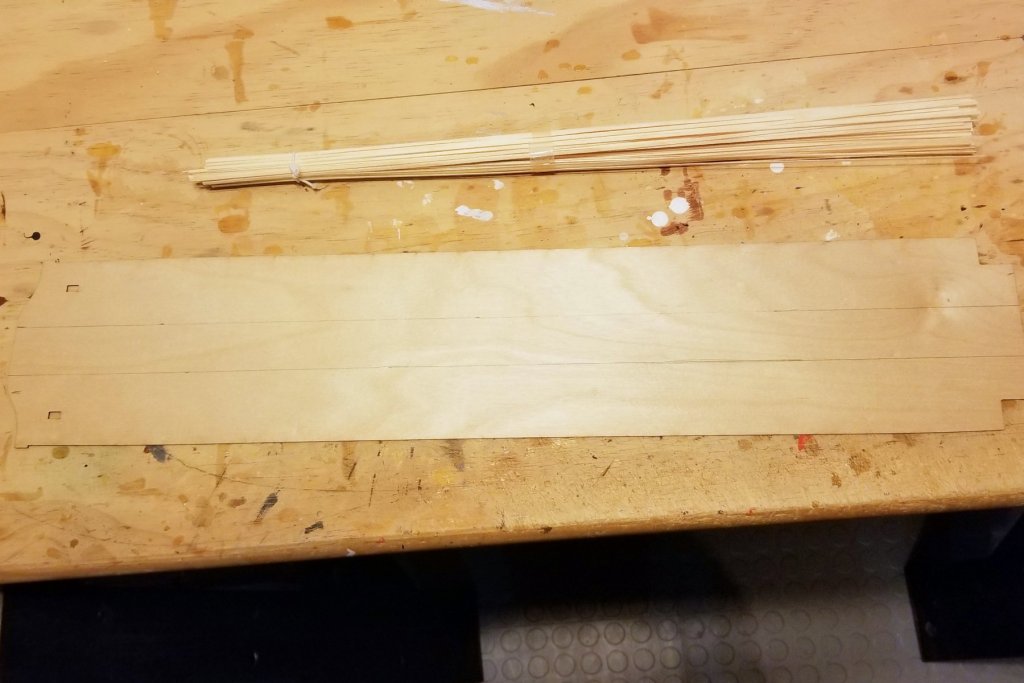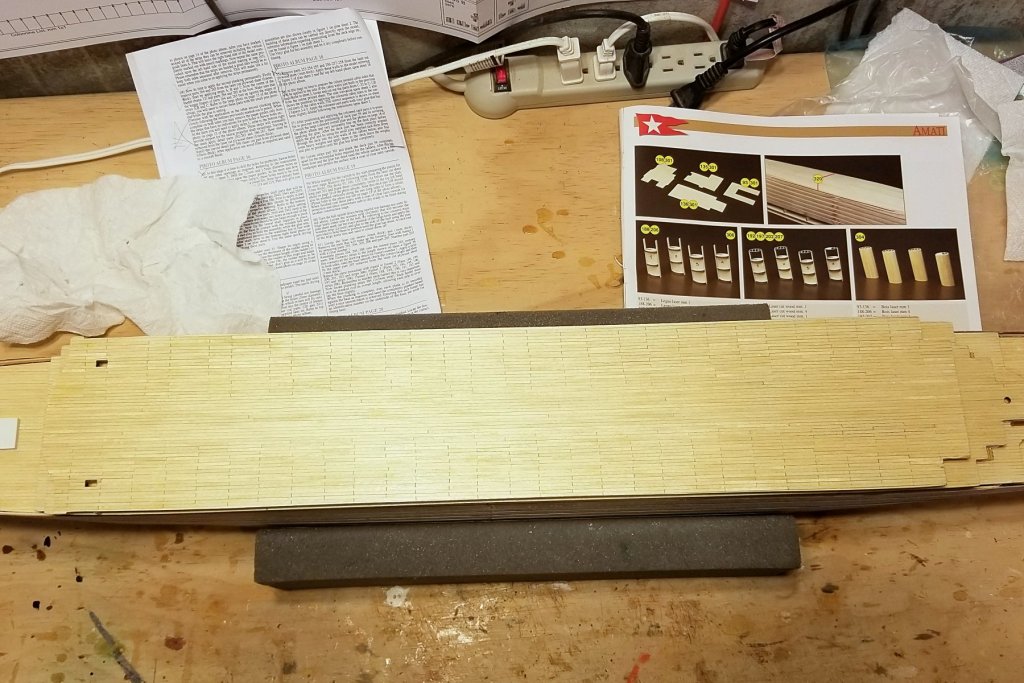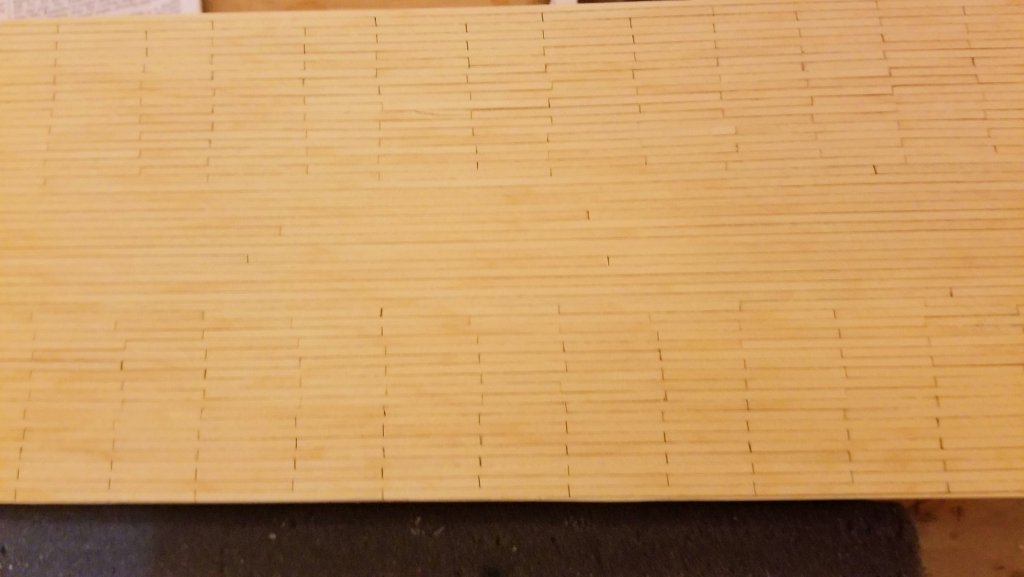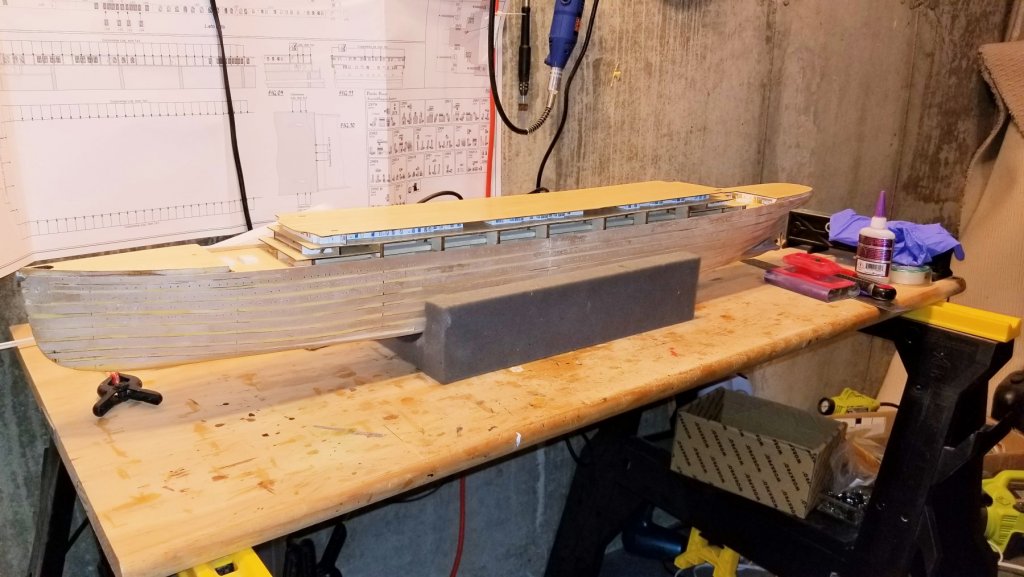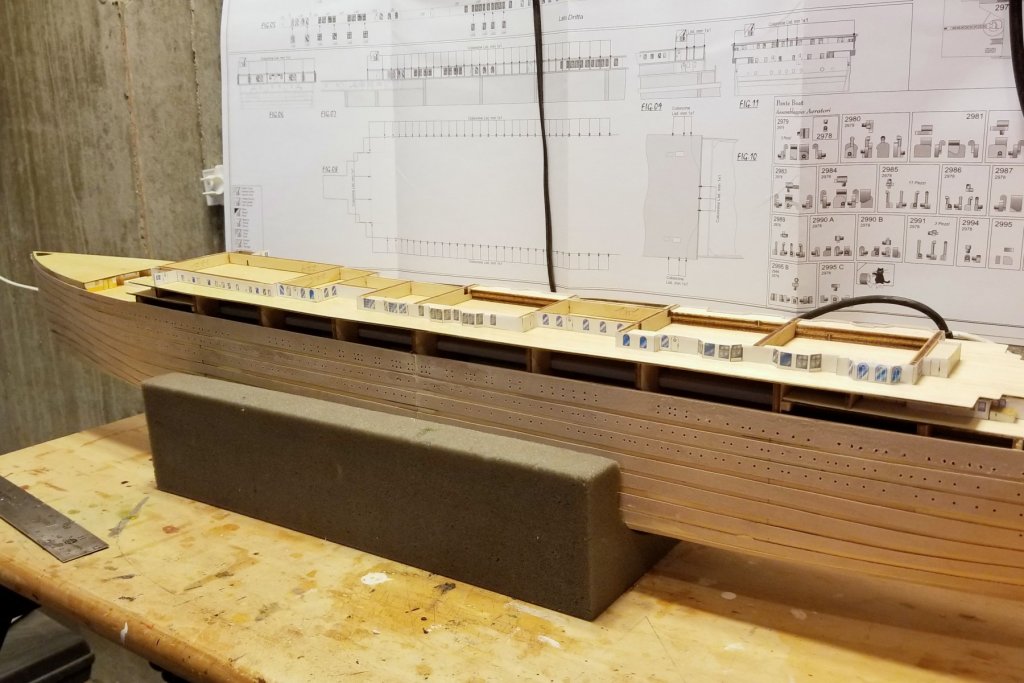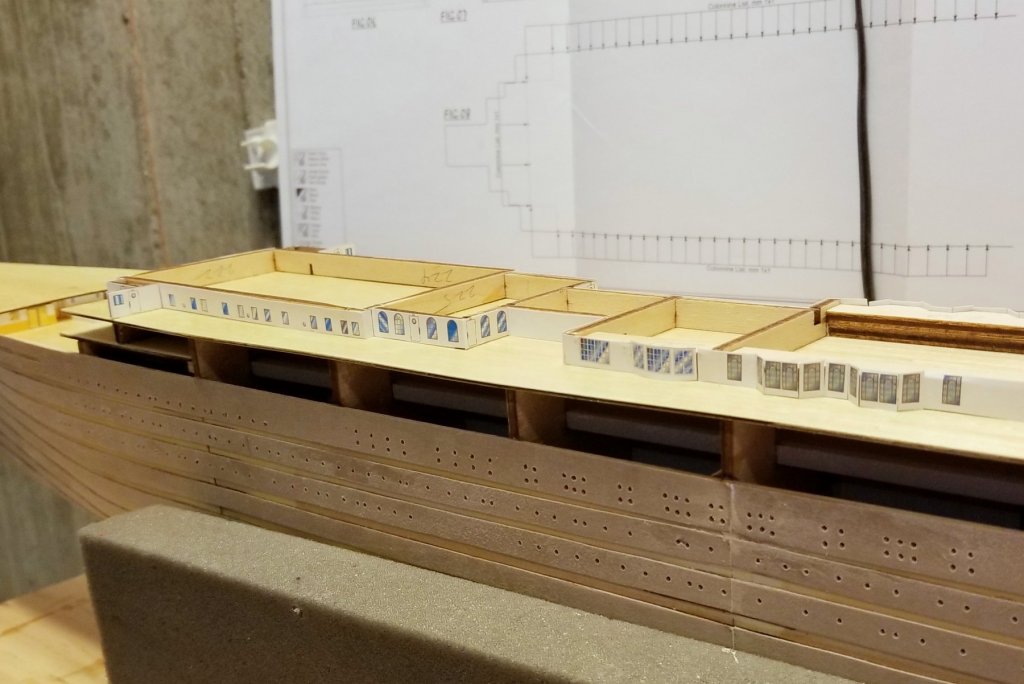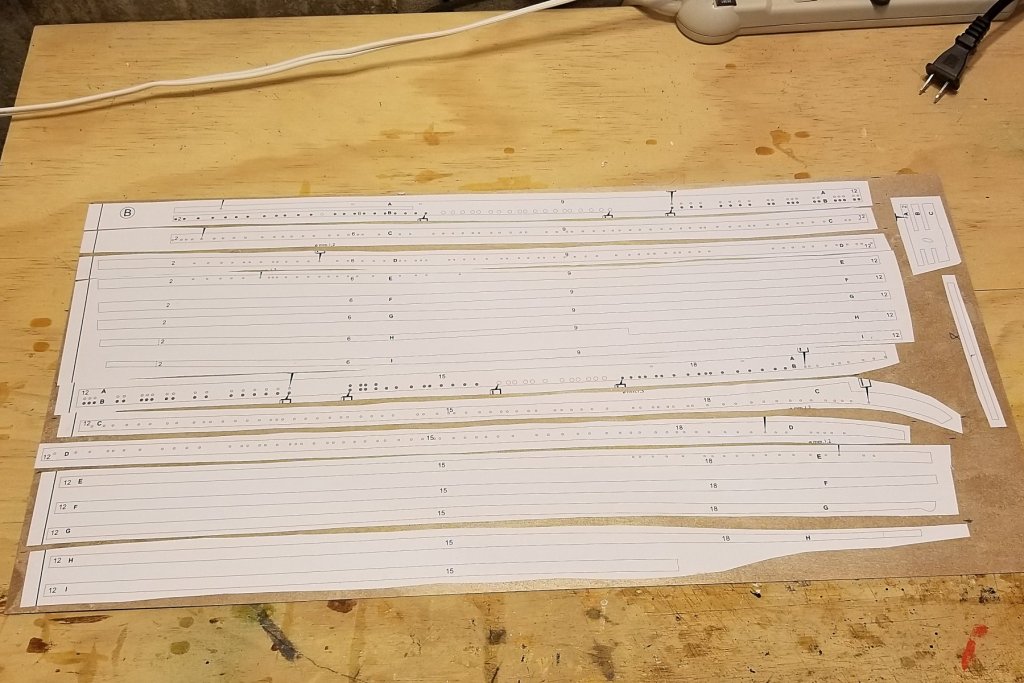-
Posts
1,071 -
Joined
-
Last visited
Content Type
Profiles
Forums
Gallery
Events
Everything posted by drobinson02199
-
Re my earlier comment on an exhaust fan -- here's a picture of the $35 fan I got on Amazon, mounted in a 12x12 shipping box, which works fine. I attached a handle to the sliding basement window so that I can pull it open and close it again. Fan moves 220 CFM. I just added the second coat of primer and this little fan works really well. There are fumes at the start, but they get dramatically reduced after a few minutes. Regards, David
-
Popeye: I see you're in Manchester, which is even colder than here in Boston. FYI, the little fan I ordered was $35 on Amazon. I plan to just open one of the small basement window and put it in as needed. Regards, David
-
Here's the hull, taped for painting, and after the first primer coat. It's winter here, and while I've painted my other models in the garage in milder weather, my basement workroom isn't well-ventilated, and the fumes are pretty strong. So I ordered a small but high CFM flow exhaust fan that I can put into a window. It comes Thursday, and no more painting until it's in. Regards, David
-
I've now decorated the large cabin structure with windows and vents. Positioning the windows to keep them aligned was a bear, even with tape as a guide, because I used CA gel and it sets fast so I had to align and get them vertical quickly. PVA glue would allow more adjustment time, but I was concerned that the windows might come off either as the model ages, or with any side contact. I think the next step is hull painting. Regards, David
-
I figured out how I'm going to keep the windows aligned. In the first picture, I have made vertical marks representing the center of the windows, by holding the structure up to the plan drawing. I then measured horizontal marks under them at 2.5mm above the bottom. I then taped just under the marks to give me a 2mm height above the bottom. The tape gives me vertical alignment, and the vertical marks allow me to place the windows properly horizontally. Picture 2 shows the work in progress, and picture 3 is the finished result. I now feel better about tackling the long cabin windows and having them come out looking good. Regards, David
-
The last step in the instructions before painting the hull is to build the deckhouses, so I've done that (first picture). In the instructions, these aren't decorated and mounted onto the main structure until after hull painting, but I've decide to do it now as long as I'm in "small parts mode." The doors and windows at this level are individually mounted photo-etched brass, and if you look at the finished pictures, the windows show a bluish background similar to the printed ones on lower decks -- but they are solid PE brass (see second picture). I remembered a technique I learned on the Revenge, where I had to paint a large stern emblem with raised "frames" like the windows here. The technique was to paint the whole thing, and then when it dries sand it with fine paper, removing the paint from the frames but not the recessed panes. Tried it here and it worked like a charm. See third picture of my mounted test window. I used a cobalt blue. For the rest, I can gang paint them while still attached to the PE strip, and then I'll have to still individually sand them. The hard thing is going to be getting all of these perfectly aligned and spaced, particularly on the long cabin. Regards, David
-
In the "not so fast" and "too clever by half" departments, I've now figured out that my clever solution above wasn't all that clever. Pic 1 below shows what I missed -- the dark deck edge, that needs to be painted too. So back to masking and painting, which didn't turn out to be all that hard (Pics 2 and 3). One puzzler in the instructions and plans is that they show small windows on those thin white edges, but there's no indication of where they come from as there is with every other printed and etched part in the kit. So more searching plans and instructions -- and after about an hour I found the tiny windows -- attached to railings above. So those will need to be painted and glued on top of these painted areas, but I think painting these is needed as the fits won't necessarily be perfect. That leaves two issues. The first is the etched windows. In all the pics, they show a colored background "through the glass", which for etched windows is solid brass. So I think I'll have to use a technique I learned on the Revenge, which is to paint them carefully in something like a medium blue, and then use very fine sandpaper to remove paint from the muntins, which are raised from the background. This will be needed for all the other windows that will be mounted on other structures at this level. The other one is figuring out how to mount the window/railing assembly on the side of the deck shown in Pic 4 (blurry, but shows the point), which has an overhang on it. Not sure how to mount those strips. Either there will be room to bend the window part back, or I'll have to sand down the overhangs to create a flat side surface. That may be the best solution, but we'll see when I get to that point, which will have to be before I mount this deck part. There is zero guidance in the instructions or plans about this -- and it leaves me wondering why that overhang was specified in the first place. Regards, David
-
[NOTE: for some reason the pics below were saved in reverse order. Just a note because I reference them below in the order I uploaded them -- but they are shown in reverse order] One of the issues with this kit is the way the instructions are laid out, and how things are sequenced in them. There is basically a section of the instructions that references the picture book, and then another section that references the plan sheets -- and they overlap! So it's necessary to be careful to look ahead in two instruction sections plus the relevant plan sheets and the picture book, to avoid making a mistake in the step at hand. Case in point is the small deck shown here, which I planked a few days ago (picture in an earlier post). Now the instructions have me adding a very thin cabin structure, and what wasn't clear to me is what color it needed to be on the sides. If I just went by the instructions, I'd glue the bare wood, and then discover later on how to paint and decorate it -- or whether it should be painted at all. The pictures in both books (there is one that shows deck fittings, but not ALL of the decks) don't show it clearly, and if you had to guess from those you'd say that maybe you leave it bare wood. But of course that couldn't be the way the real ship was built. So after searching several times through the instructions and plans I found a section much further on that talks about mounting this cabin structure on the deck and painting it white. The instructions actually read in that sequence, but you'd figure that a modeler would paint first. The tricky thing is that the cabin is so thin that it would be really hard to keep paint off the side of the deck, or you'd have to mask. So once I figured that out, I decided to paint first and then glue on, which still requires careful cutting of the wood pieces and fitting them (using clips to hold in place) before painting and then gluing. The pics below show the loose pieces cut and painted, drying, then a side shot of the cabin structure, and then what the cabin structure will look like on the main deck (although there are PE decorations to go on it). Good result, but a note that this kit requires more cross-referencing and reading ahead than other kits I've built. Regards, David
-
All 4 funnels built. They will be painted later on. The lines you see are showing through wood filler, so they should disappear with paint. Regards, David
-
Thanks, David. I'm finding it really different. One of the things I notice all the time is the scale. My previous build, HMS Fly, was 1:64. This one is 1:250, so I'm constantly noticing the smaller scale as I build. Regards, David
-
Some progress on different items: Picture 1 is the bilge keels -- below the blue arrow. Picture 2 is 4 small decks that will be on top of the large one. Picture 3 is the stack subassembly, partially completed showing how the planking works for the side. Picture 4 is a completed stack, ready for varnish and ultimately painting. Regards, David
-
Kevin: That's right. On the large deck section I show above, pretty much just the two bands on either side, and there is "stuff" that shows up on those. Regards, David
-
Chris: It's approaching, but I think there is about 1-2 weeks' work left before I get to that point. Regards, David
-
I've added the top deck now on top of the cabins. A couple of notes. Inexplicably, the instructions say to mount the deck on the ship before planking, which would just make everything harder in terms of trimming at the edges and for the ladder holes. This is the first large deck that will actually be visible, so while I just used full-length planks on the earlier ones, on this one I decided to add some staggered planking. But the center of the deck is covered, so I measured that (Picture 1) and then used full length in the center, moving to 40mm staggered on the outer edges. (Pics 2 & 3). The uneven parts near the center actually won't show because I erred on the conservative side for the center area -- it took me some time to figure out how best to do this. I started with 40mm pre-cut pieces, which didn't work very well. I then changed to gluing on full length planks and scoring them against measured lines, which worked better. Pic 4 is the full model so far. Regards, David
-
Chris: Yes, the instructions are pretty clear about it. What they say is "paper glue" -- whatever that is. I was originally going to use diluted PVA, which is what I used for the decorations, but I thought about it and felt that PVA would make the paper too hard to remove, so I used spray adhesive which is like rubber cement, but easier to apply uniformly. On side one I only used one spray coat, and the paper slipped off as I cut it, so I initially reinforced it with undiluted PVA (which was a bear to get off), but then started using clips while cutting the strips where I could remove the paper. On side 2 I sprayed two coats (wet -- one right on top of the other), and that solved the slipping issues, but some of it was harder to remove. The steamer fixed that. What Amati doesn't specify is HOW you are supposed to remove the paper. So that's up to the modeler to figure out. It all gets painted, so the color marks that sanded paper leave on won't matter as long as it's smooth. I suppose that the alternative would be to laser cut all the strips, but then there would still be the challenge of getting the portholes drilled exactly, which is what the paper strips on the first 4 rows do. Regards, David
-
Chris: I think I understand your question. For the strips not yet glued where I can remove the paper, I just slip a knife under it and slowly pry it up. The spray adhesive loosens and it peels up. The few remaining spots then sand off. For this second side, I found that this worked for most of the other strips glued to the hull as well, and then I had to go back to the steamer. I think spray adhesive works well for this. When I used PVA glue on side 1 to strengthen things, the paper was much harder to get off and I had to use the steamer all the way. Regards, David
-
Second side strips now on. The approach of not cutting the paper strips precisely until they are glued onto the plywood worked much better. It's hard to keep a straight edge when cutting paper only, but when cutting the thin plywood it's very easy to get a straight edge. You can't see it in the picture, but this side looks much more even and finished than the other one. Fortunately, it's my planned "display side." Regards, David
-
Chris: On the starboard side, I used one layer of spray adhesive, and found that I had to hold the paper on with clips while cutting as any bending caused it to begin to loosen in spots. For the upper strips where the paper had to stay on for porthole drilling, I had to reinforce it with paper glue in order to cut it, and that in turn meant using my steamer and the back edge of my knife to peel it off. The lower strips came off easily before gluing as they were ready to. For this side (port), I have used a double layer of spray adhesive. I have cut out one strip already, and it held much better -- so I'll now see later how easy it is to get off. I did notice that this approach of leaving wide borders is much better and leads to much cleaner and straighter edges on the strips. Regards, David
-
I was able to cut another step from side 2 strips. The instructions have you carefully cutting the strips, then pasting them onto the thin ply, then carefully cutting them out again on those outlines. I realized that I only have to be careful the second time, so I did a rough cut of the strips (so they would all fit onto the plywood sheet), and then pasted them on as shown. Was able to paste some sets of 3-5 strips intact. Took about 15 minutes all in, vs. maybe 90 minutes the other way. Now I'll cut carefully. Regards, David
-
Finished the strip mounting on one side. It's tough to keep the lines straight when you cut out the strips, even using scissors. The other issue is that as you cut the long strips, they curl up to clear your hand and the paper tends to separate. I dealt with this by using small clips on the paper as I cut, but in some cases I had to re-glue them down using PVA. The first picture shows all of the strips mounted. My modified alignment process worked really well, and having done it this way I am really glad I avoided the two step process with pencil outlining as specified in the instructions. That would have been really messy. Where there were no portholes to be drilled, I was able to remove the paper before mounting, which was fairly easy. The instructions save porthole drilling for later (until both sides done), but I was concerned that when I flip this over in my foam cradle the friction as I work on the other side would pull off some of the paper (which marks the porthole and hawse hole locations), so I went ahead and drilled the portholes and filed the hawse and scuppers, and then removed the paper. After some trial and error, I found that the best way to remove the paper is like wallpaper removal, using my steamer continuously along the strip while running the back side of my knife (like a smooth chisel) along the strip. Second pic shows the strips with portholes drilled & paper off. There is some more finish sanding to be done on these, but I want to be careful, as the strips are very thin. Regards, David
About us
Modelshipworld - Advancing Ship Modeling through Research
SSL Secured
Your security is important for us so this Website is SSL-Secured
NRG Mailing Address
Nautical Research Guild
237 South Lincoln Street
Westmont IL, 60559-1917
Model Ship World ® and the MSW logo are Registered Trademarks, and belong to the Nautical Research Guild (United States Patent and Trademark Office: No. 6,929,264 & No. 6,929,274, registered Dec. 20, 2022)
Helpful Links
About the NRG
If you enjoy building ship models that are historically accurate as well as beautiful, then The Nautical Research Guild (NRG) is just right for you.
The Guild is a non-profit educational organization whose mission is to “Advance Ship Modeling Through Research”. We provide support to our members in their efforts to raise the quality of their model ships.
The Nautical Research Guild has published our world-renowned quarterly magazine, The Nautical Research Journal, since 1955. The pages of the Journal are full of articles by accomplished ship modelers who show you how they create those exquisite details on their models, and by maritime historians who show you the correct details to build. The Journal is available in both print and digital editions. Go to the NRG web site (www.thenrg.org) to download a complimentary digital copy of the Journal. The NRG also publishes plan sets, books and compilations of back issues of the Journal and the former Ships in Scale and Model Ship Builder magazines.



